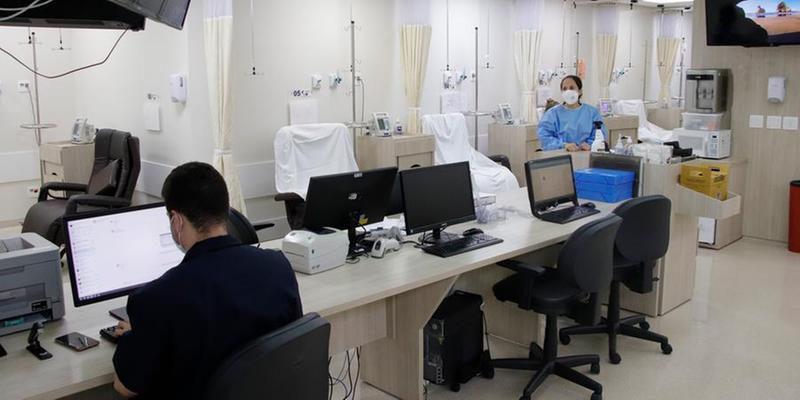As part of the project to make Base Hospital a regional reference in cancer treatment, the central laboratory of HB will be equipped with precise genetic mapping technology, which will allow specialists to identify mutations and determine the most effective treatment for each patient, optimizing resources and increasing the capacity of the service provided to the population, especially users of the unified health system ( SUS).
In the past year alone, HB conducted 13,740 consultations, averaging 1,145 per month — the help that gained momentum after the adoption of telemedicine, implemented during the pandemic to enable access to specialists and maintain the health of immunocompromised patients.
The new laboratory, which is already being organized, is a partnership between HB and the Chinese-Canadian company Geneseeq, which is developing analysis equipment based on next-generation sequencing (NGS) technology.
“Next-generation sequencing is a DNA sequencing technology that allows you to look for multiple mutations and other genetic changes at the same time. In other words, in addition to improving the process, it allows for a better understanding of the disease, making treatment more accurate, as we are able to identify genomic alterations. The most invasive,” explains oncologist Daniel Villarim Araujo, clinical oncology service coordinator at HB Onco.
Virologist Maurício Nogueira, coordinator of the research laboratory at Hospital de Base, highlights that the new technology will allow treatment to be customized according to the characteristics of each patient.
A large portion of cancers are hereditary and their characteristics can interfere with the results of some treatments. The sequence allows for an individual approach to each patient. With this broad diagnosis, we will be able to identify more efficient strategies for each case, as well as optimize resources,” he says.
Without the technology, Hospital de Base would need to redirect biological material from patients for analysis in other laboratories, delaying diagnosis for people who fear disease progression.
The service is expected to be fully operational in the second half of next year.
“At this first moment, we will prioritize the analysis of the most frequent cancers, such as breast, cervical and lung. But little by little we will expand the service to meet all diagnoses,” says Nogueira.
Jorge Faris, CEO of Funfarme, celebrates the partnership. “Our oncologists suggested a partnership with Geneseeq because the company is a reference in technology and research. Diagnostic quality is the differentiator we seek to establish ourselves as a reference service and centralize the service to the population of our region,” he says.
As the partnership is recent, the genetic investigation protocol has not yet been defined. That is, whether every patient with cancer will undergo genome-mapping biomaterial or whether the study will be indicated for more complex cases, with resistance to treatments.
know more
What does the acronym NGS mean?
NGS stands for Next Generation Sequencing, also called massive parallel sequencing or high-throughput sequencing.
Various terms referring to a group of different and modern DNA sequencing methodologies, namely the precise determination of the order in which the nucleotides are located
These techniques allow for much faster and cheaper DNA sequencing compared to the previously used Sanger sequencing, and have revolutionized the study of genomics and molecular biology.
The NGS method sequences short DNA fragments (reads), which are typically 50 to 300 nucleotides long.
Although they differ significantly from each other, all NGS sequencing platforms rely on massively parallel processing of DNA fragments.
With NGS, it is possible to sequence the entire genome or just specific domains of interest, including all of the approximately 20,000 encoded genes or a small number of individual genes.

“Writer. Analyst. Avid travel maven. Devoted twitter guru. Unapologetic pop culture expert. General zombie enthusiast.”

